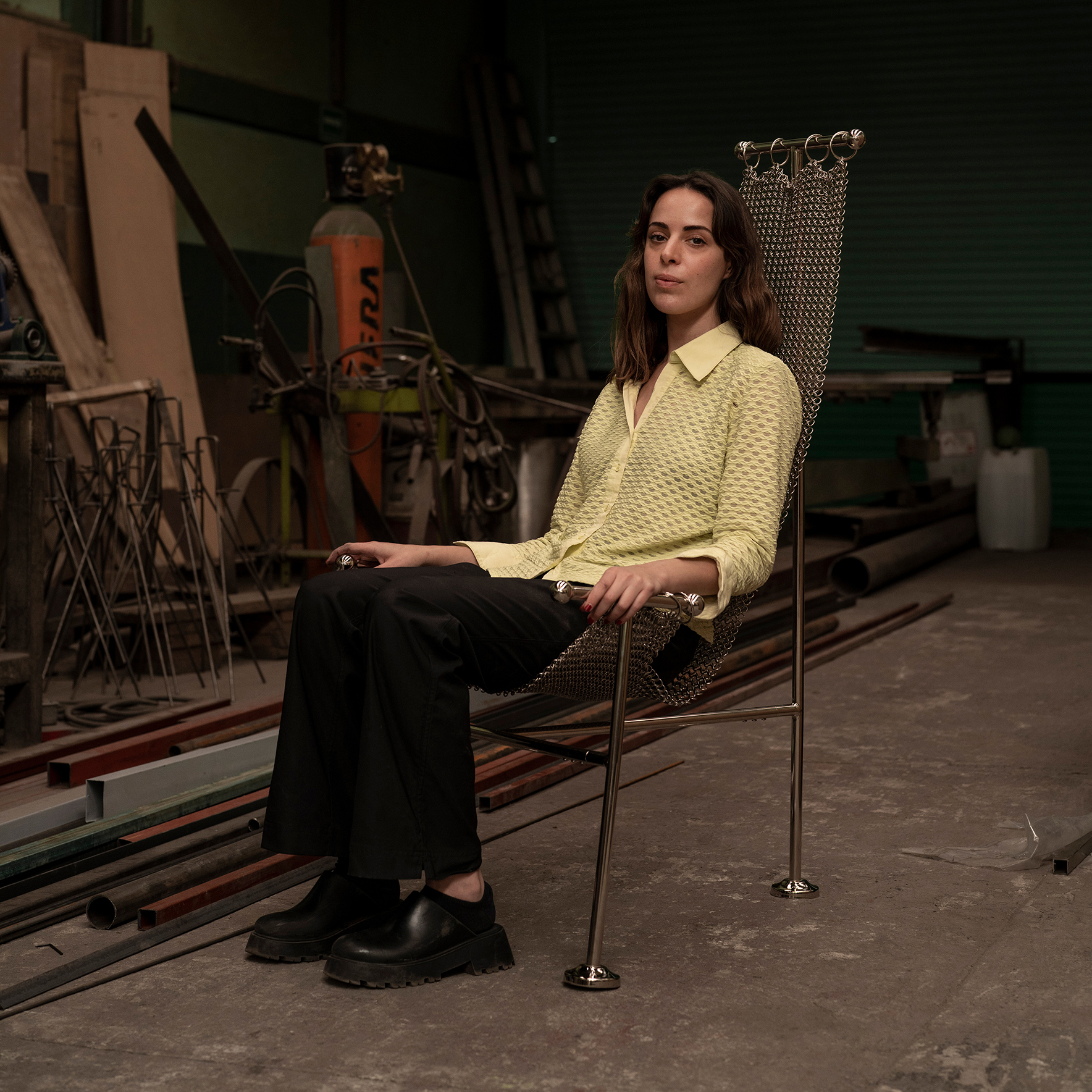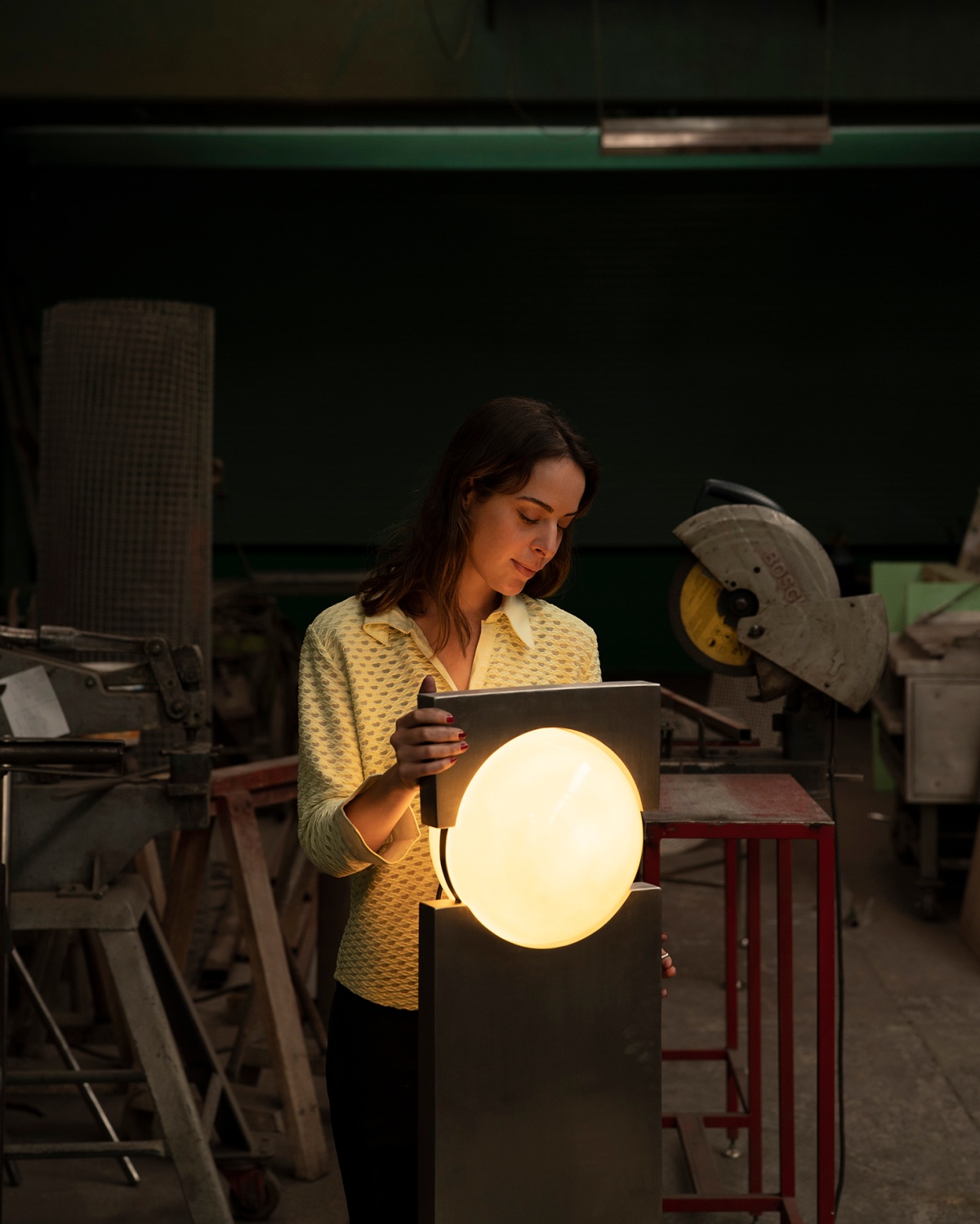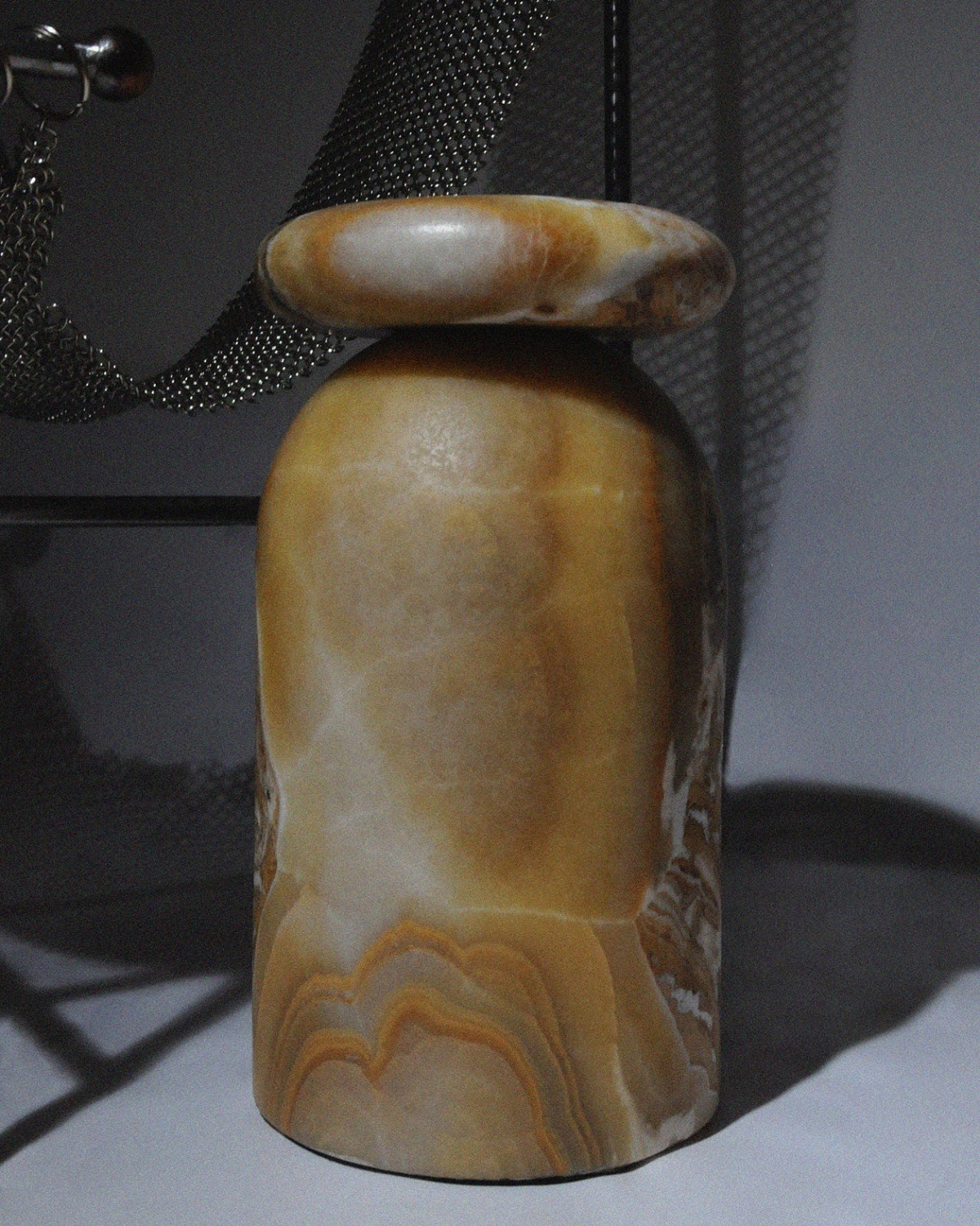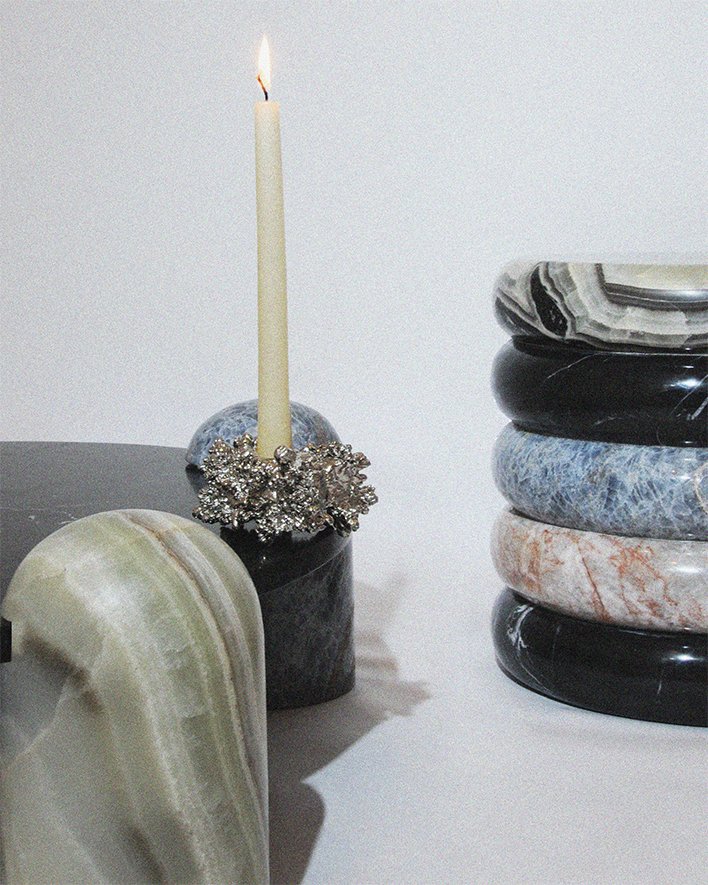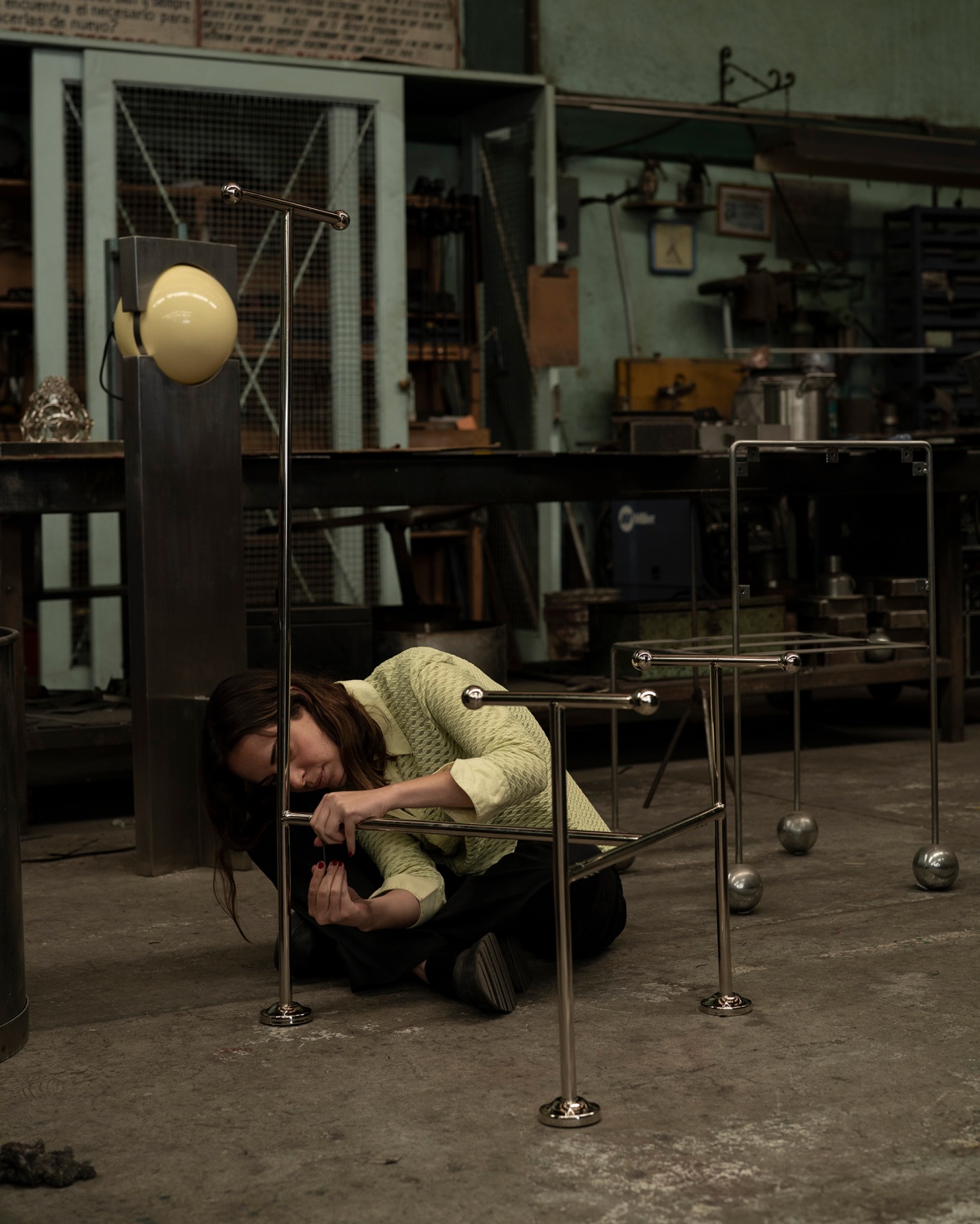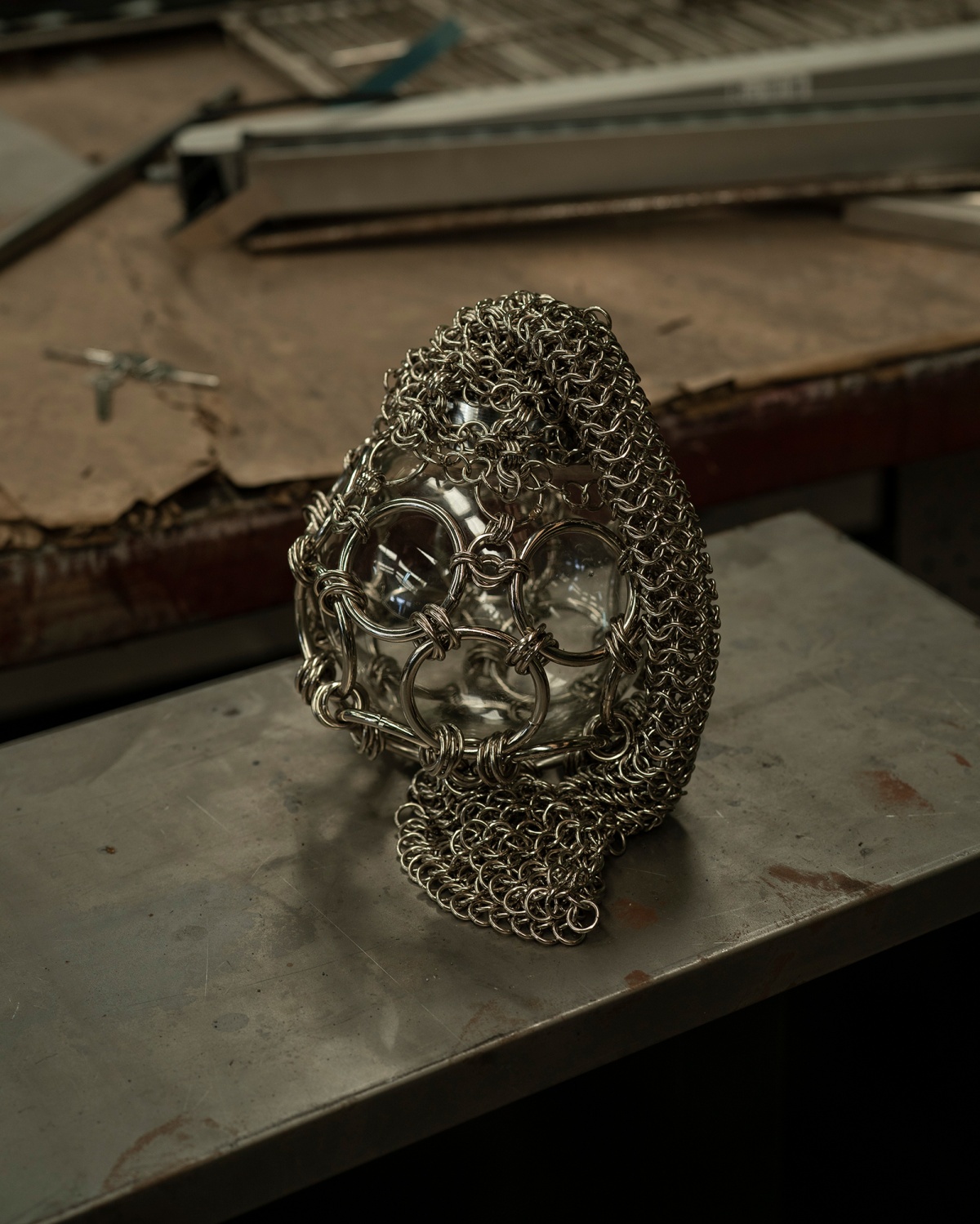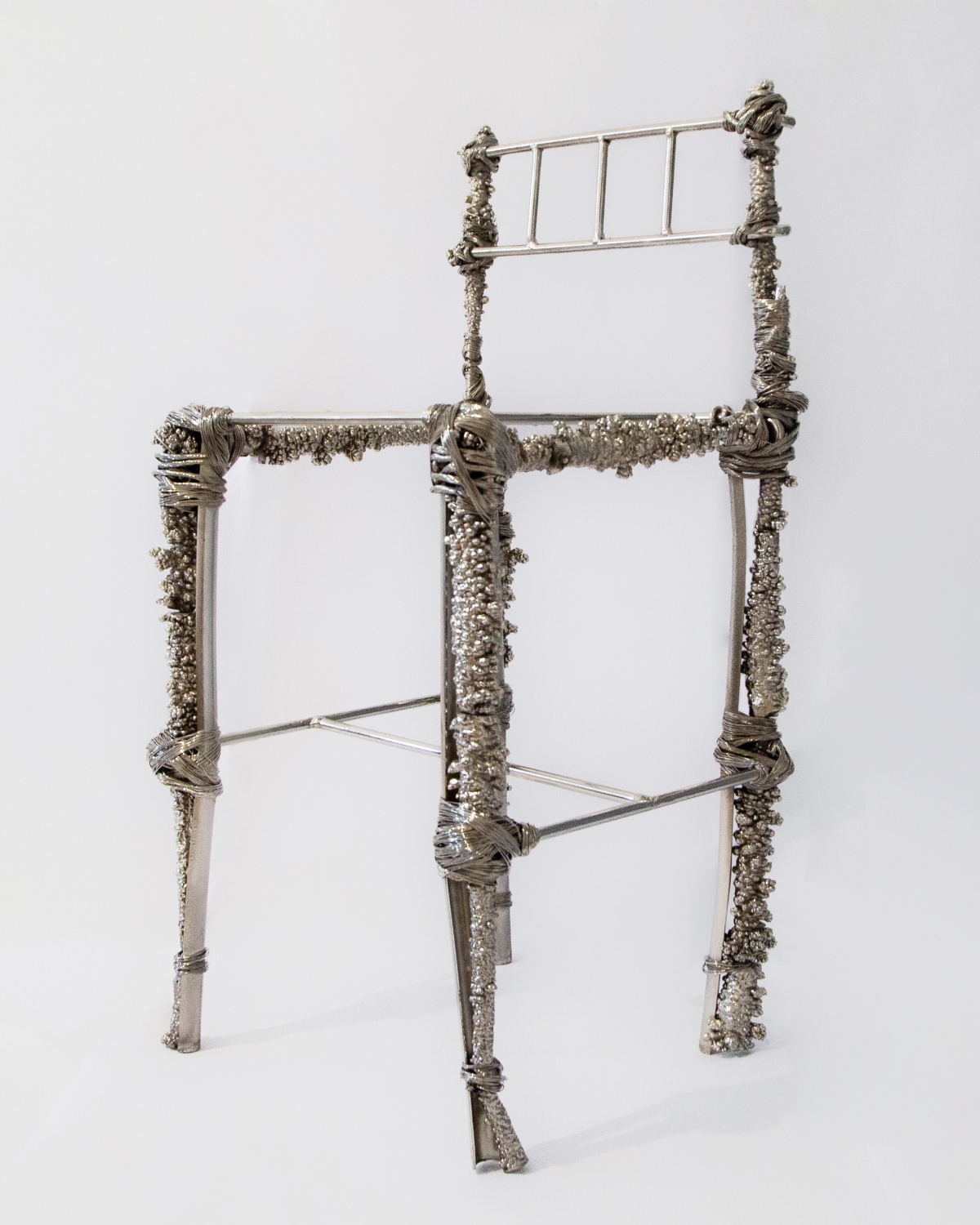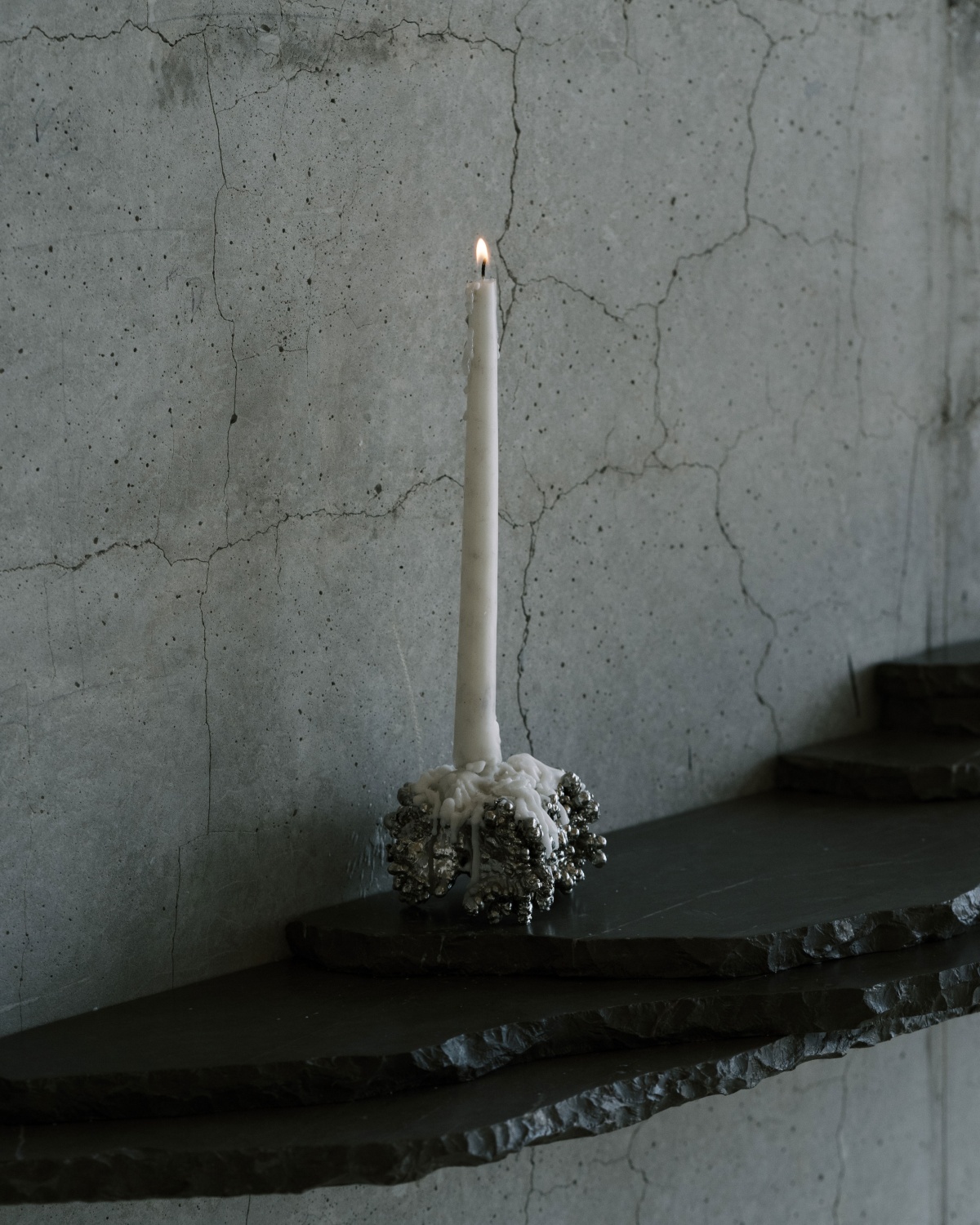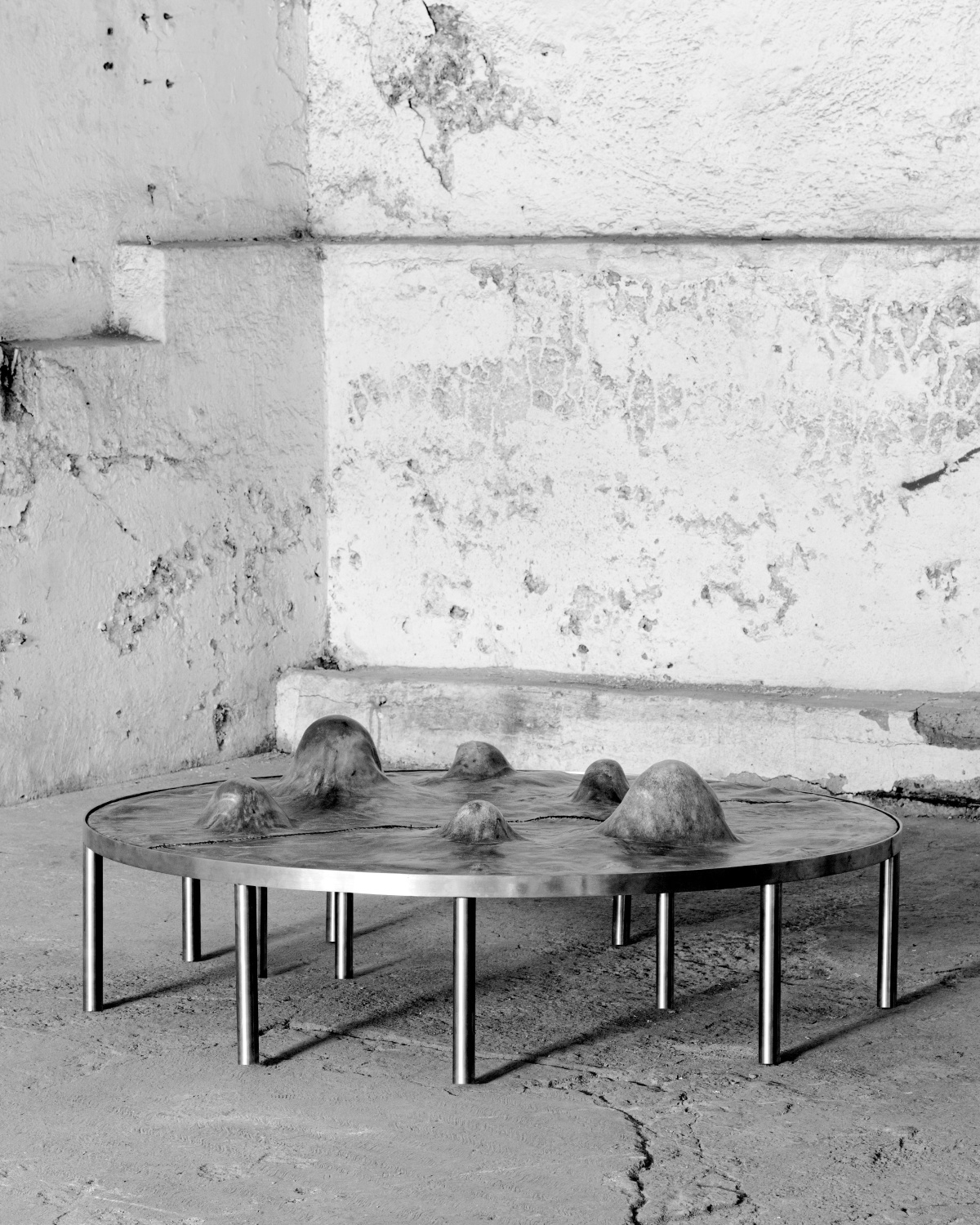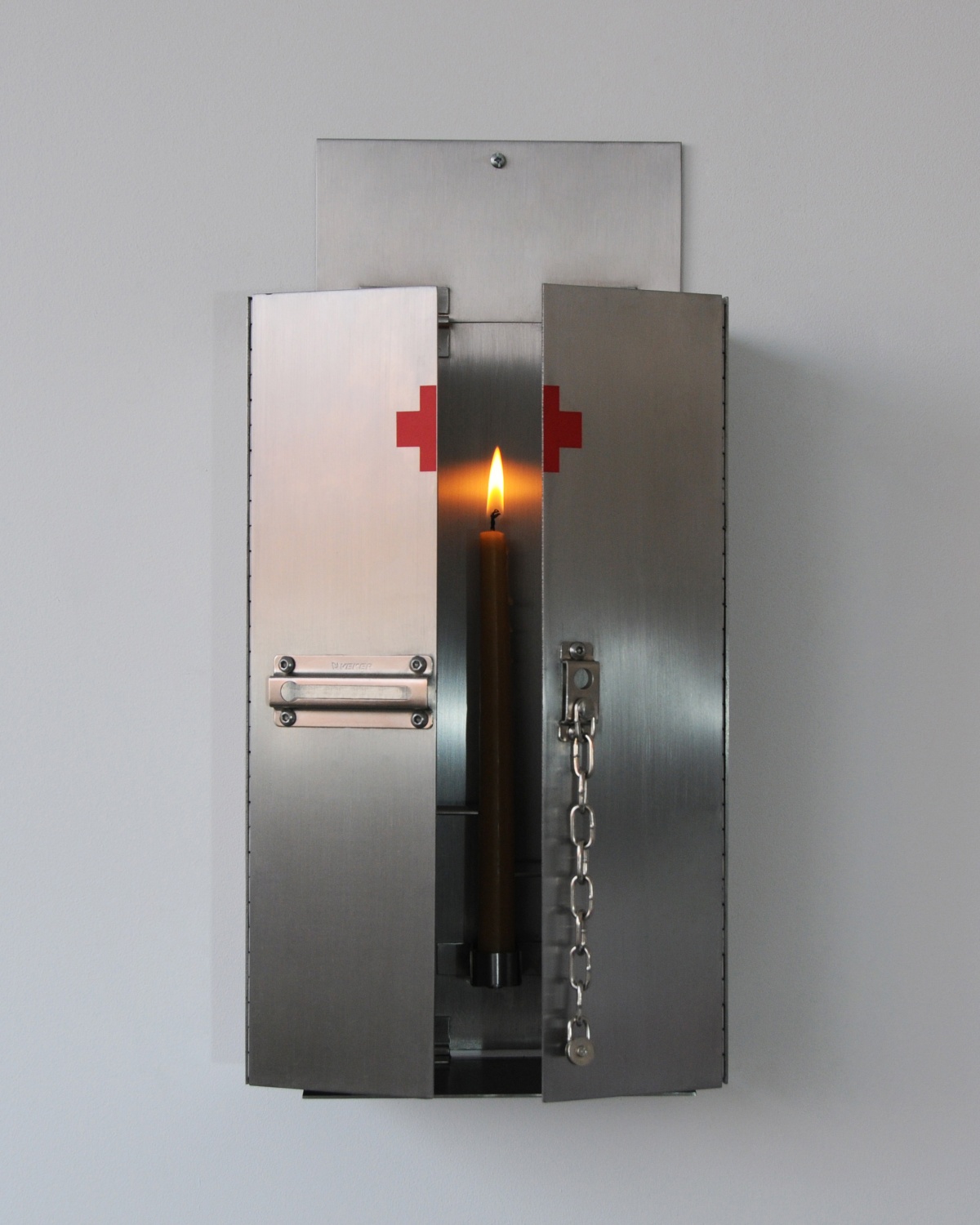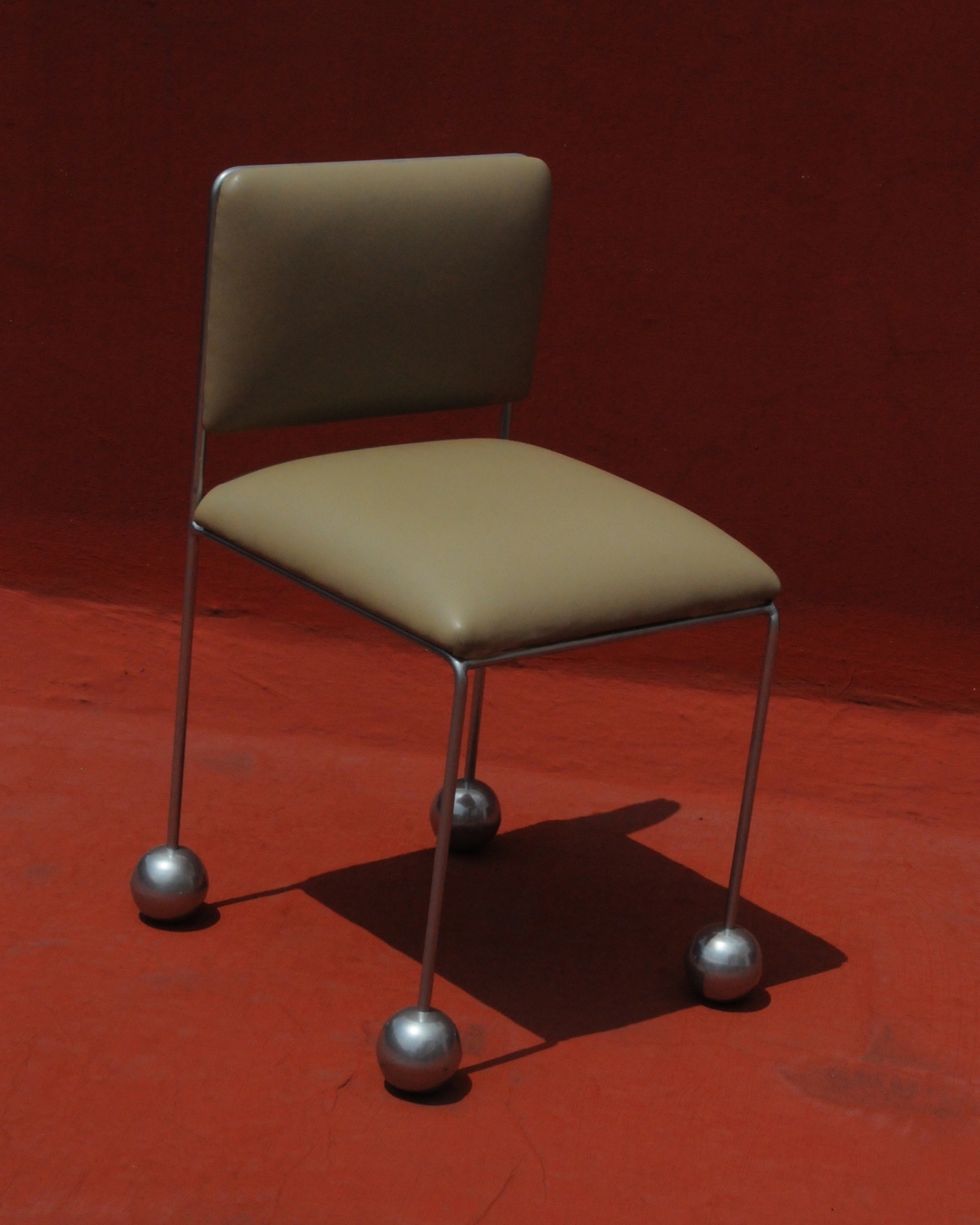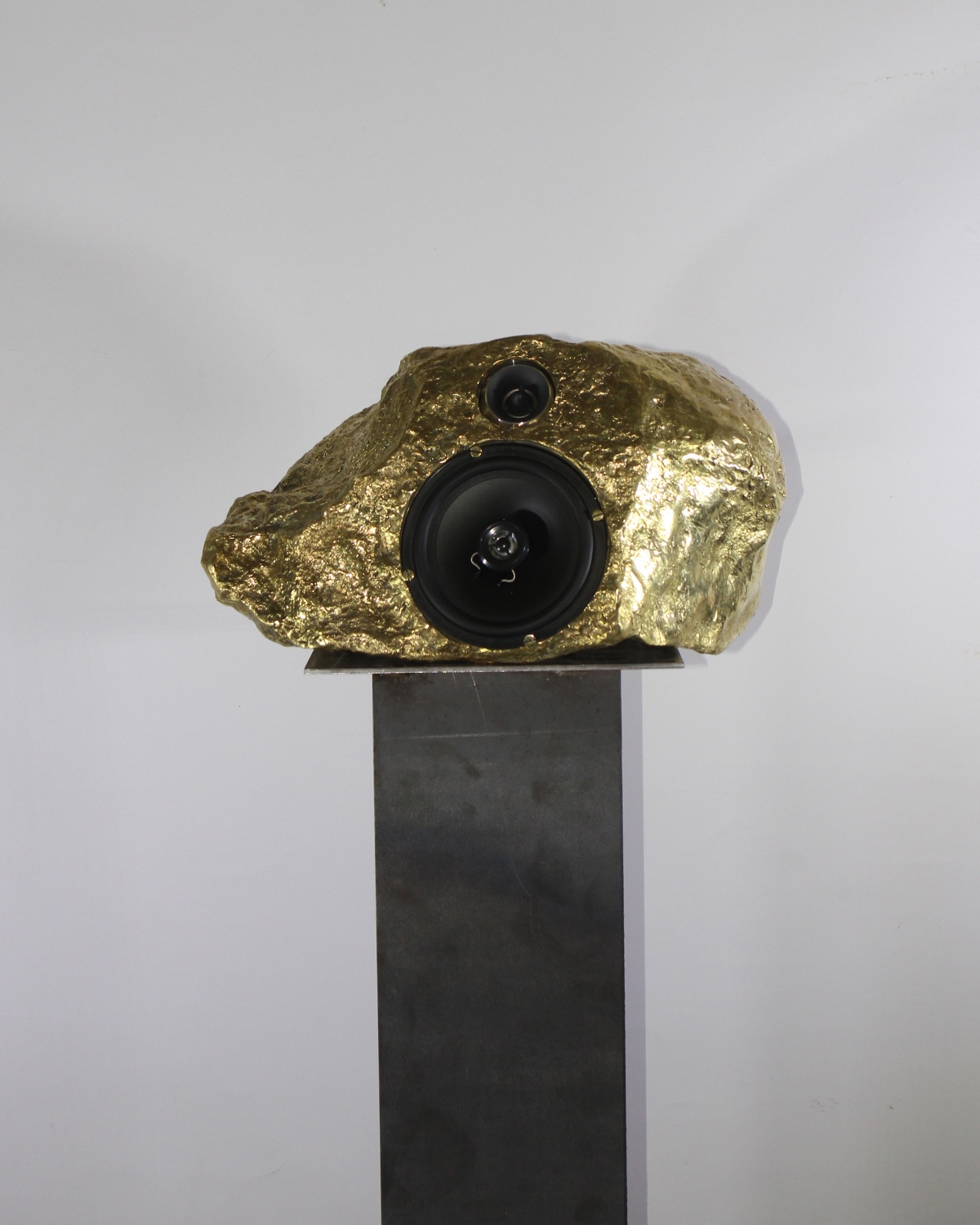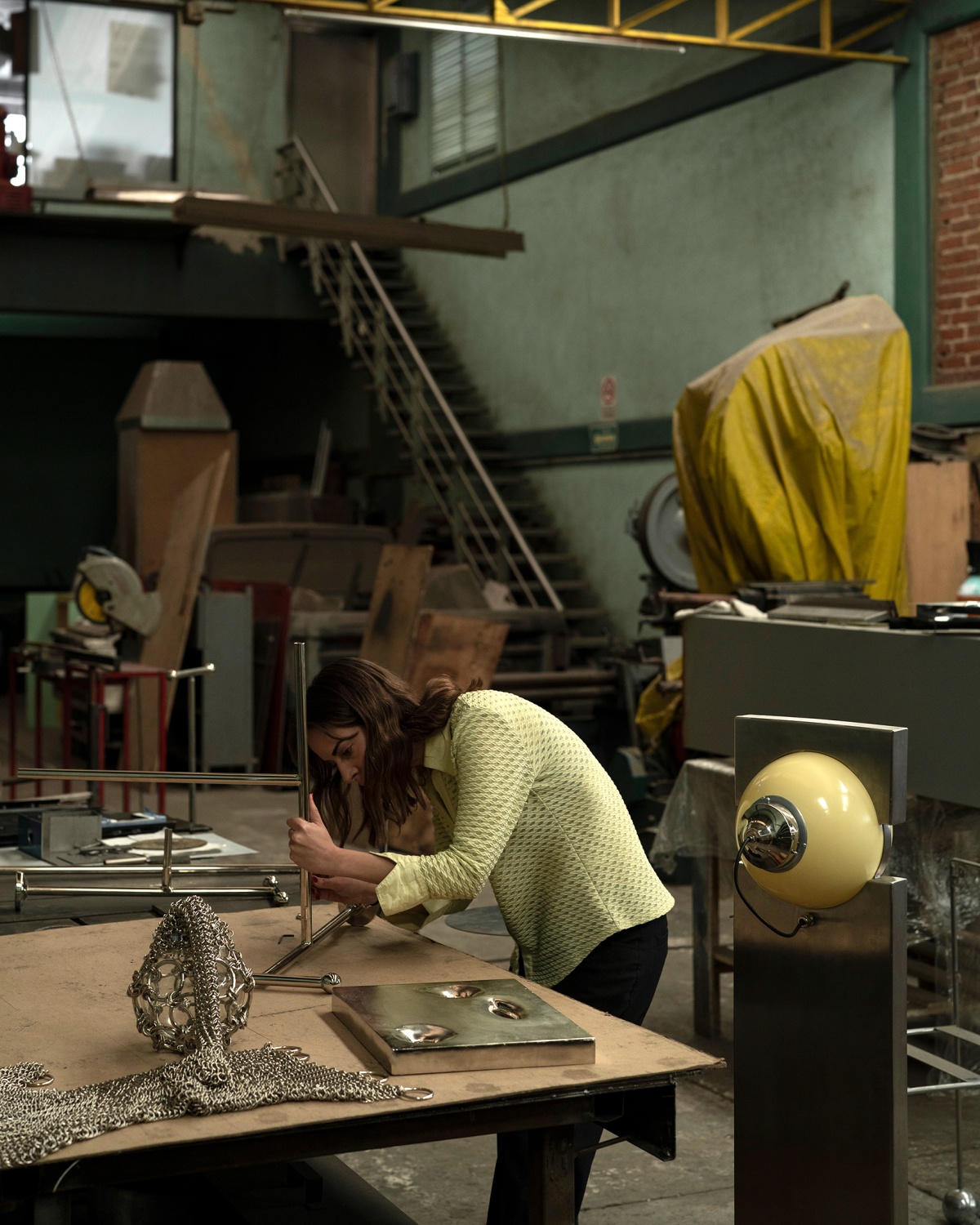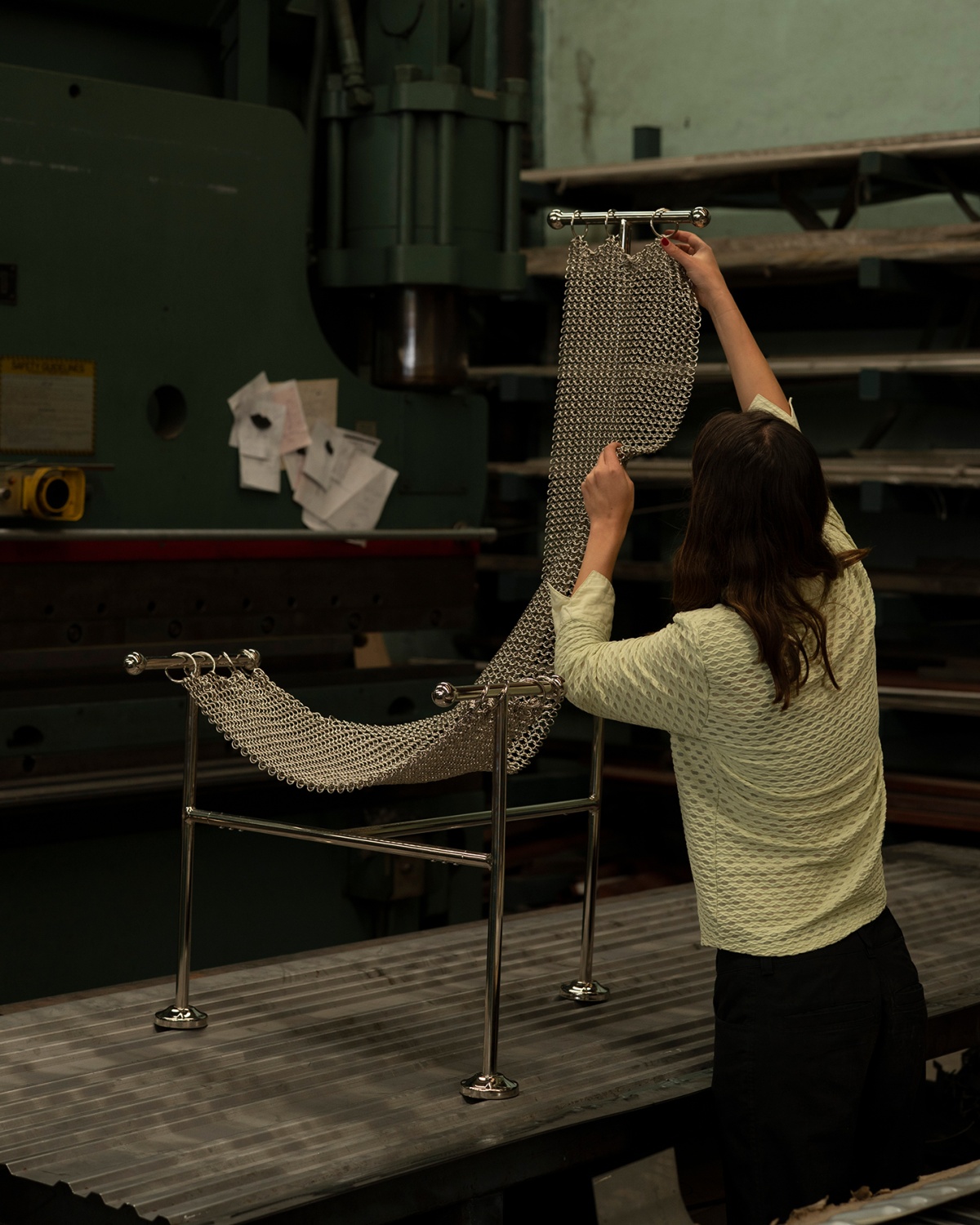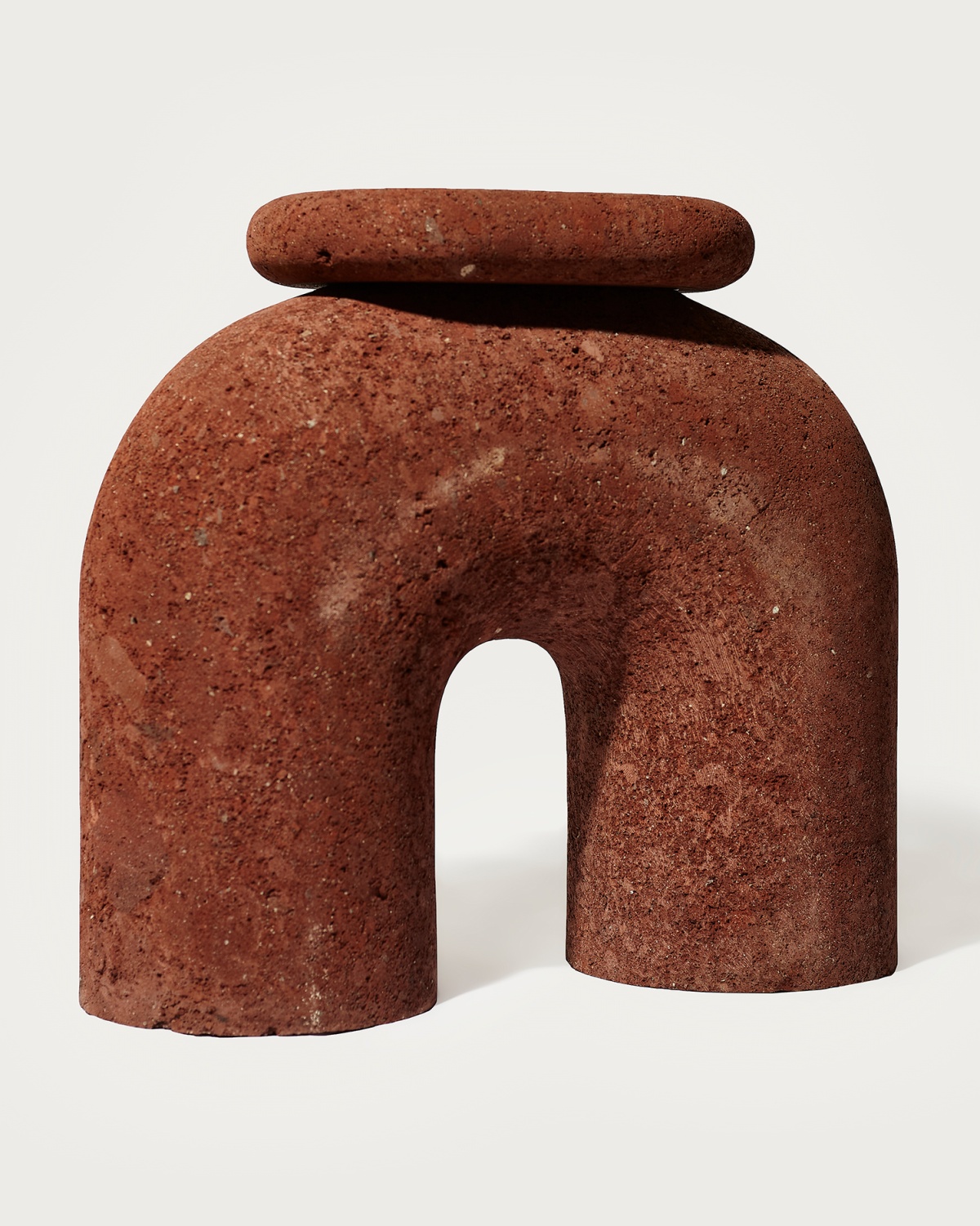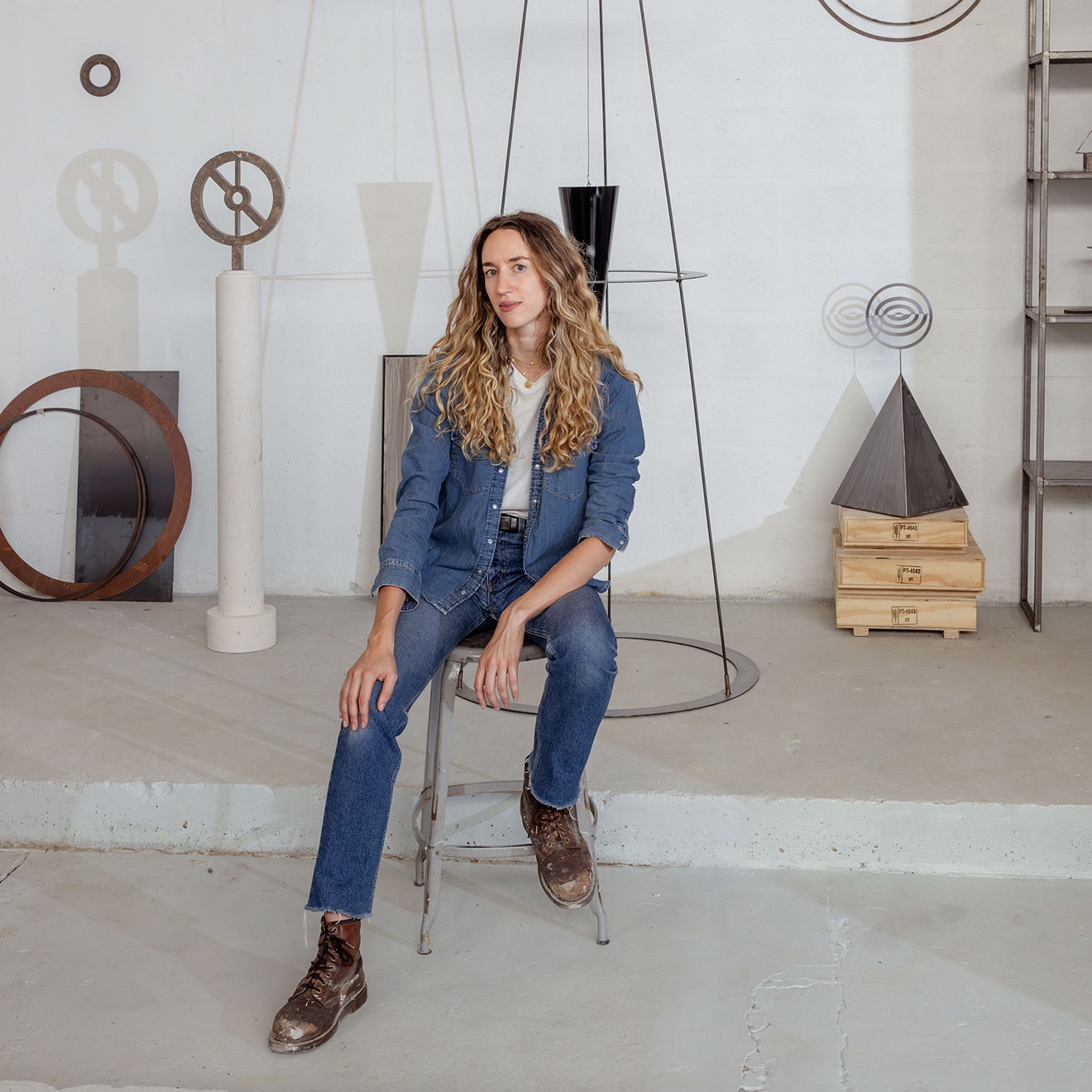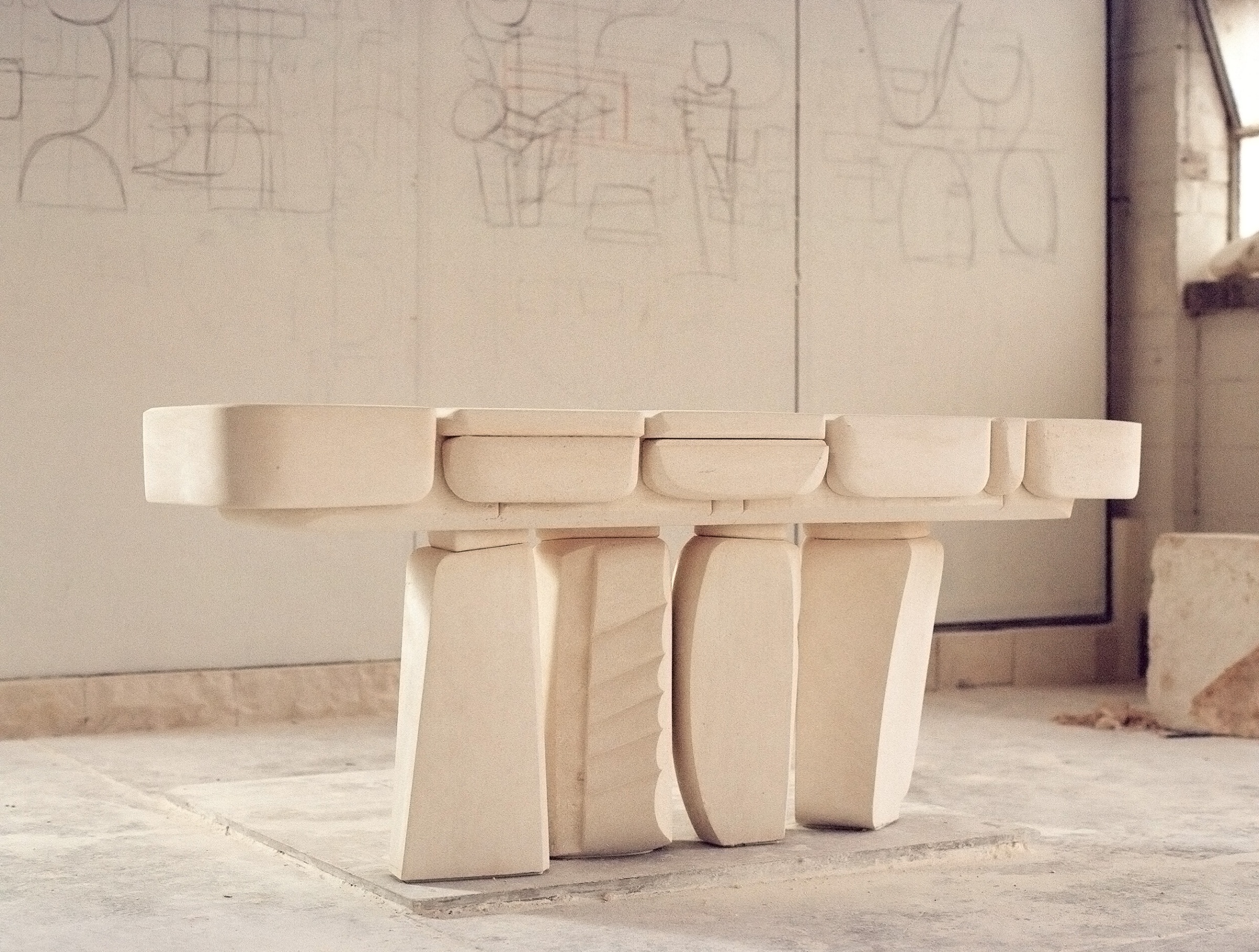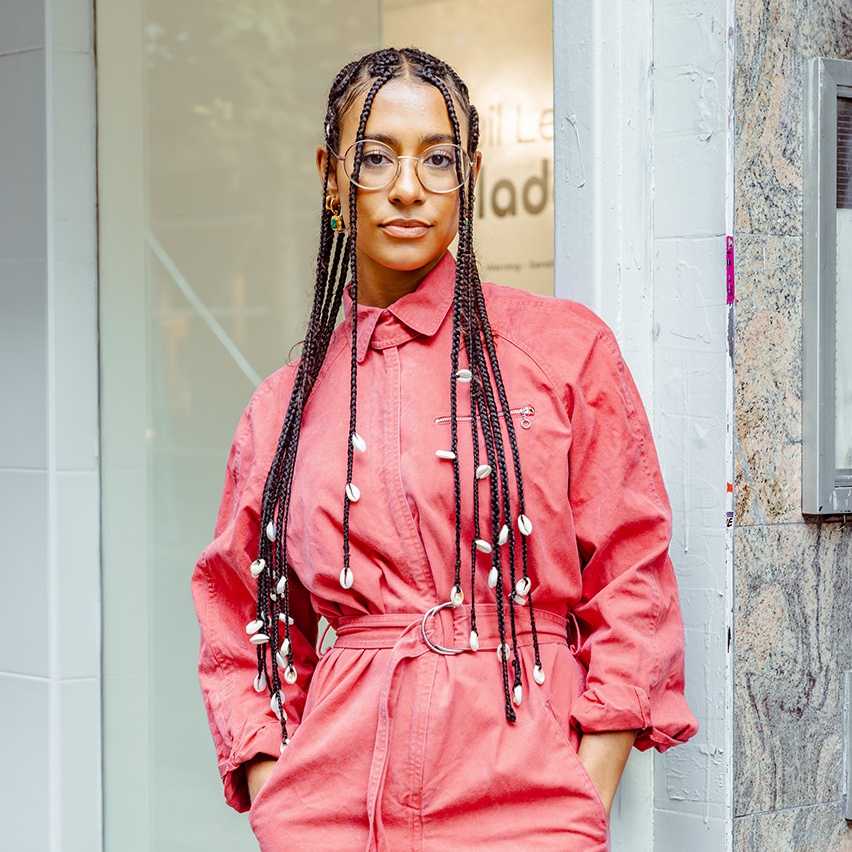Tatiana Bilbao is the kind of person who reaches out, who makes connections. Despite her hectic schedule—she runs a 52-person architecture and design studio from Mexico City, has five children, and is traveling the world on any given day—she makes an effort to really get to know people. She’s thoughtful—from questioning her own and others’ intentions to extending a hand to younger creatives. Before this conversation for Sixtysix, Tatiana made a point to get to know artist and designer Maika Palazuelos—inviting her to come by her bustling namesake studio. They’d never met before, and she wanted to meet her before the interview we arranged.
Tatiana herself is well known and respected across the industry—she’s a force for good as she challenges the ideas of traditional architecture and what it means to take care of people. Her work includes a social housing prototype displayed at the 2015 Chicago Biennial that cost less than $8,000, a research center on the Sea of Cortez on Mazatlan, and, more recently, a master plan for the National Park La Huasteca, among countless other projects. Her work is part of the collection of the Centre d’Art Georges Pompidou in Paris, the Carnegie Museum of Art, and the Art Institute of Chicago.
Maika, originally from Monterrey and now living in Mexico City, is not long out of school but is already changing the way we think about design and function. She studied painting at the University of Monterrey and RISD and started her own studio, Panorammma. She now spends her days making furniture and design objects that are at once both magical and useful—from speakers that look like rocks to her Chainmail Chair, a creation she made with Renee Espinosa using a seat made from more than 2,000 hand-linked steel rings. It’s a modern take on an old metal craft and a conversation, she says, about grandeur, victory, violence, restraint, and bondage.
We recently sat down to facilitate a conversation with Tatiana and Maika as they talked about imagination, creation, and why to even create in the first place. –Laura Rote
- Maika’s studio, Panorammma, is based out of Mexico City. Photo by Fabian Martínez
- “My intention might come from an artistic background, but I like my work being utilitarian. That’s something I have found very liberating.” Cult Stool. Courtesy of Panorammma
Laura: What inspires you about one another’s work?
Maika: I was very lucky to come close to Tatiana’s work because my school has a new building she just finished. Every day I would go to class and see this huge project being built. The sheer magnitude of taking on a project like this for me is intimidating; I always work on a small scale. I’m very shy in that sense. Taking on these huge projects and even visiting her office last week, seeing her have a big team and still be able to be a creative is something I really admire.
Thinking about these buildings she made in Monterrey for my university, I think she really left aside her ego, which I think is difficult as an architect. You can tell she makes the context of the building a priority. Seeing these new buildings and taking a look at the old buildings, it’s almost seamless. It’s difficult to tell what is the new style and what is the old building.
Tatiana: Thank you Maika, very much. I saw your chair with the beautiful metal seat, and I was very, very impressed. Then I saw that you were the one Sixtysix was proposing me to have a conversation with and I was super excited because it was an opportunity to understand your work much more.
Right now you’re saying you are not brave. I think you’re very brave. I think the work you’re doing is super bold. You are experimenting with forms and materials, sticking to your desire and what you want to express. Not everybody does that—especially not in the beginning. To build your career you need a lot of agency to sell and to be able to sustain yourself. You have not surrendered your work to that because all the things I see are incredibly bold; you can tell they’re holding on to your principles. These have been designed with an incredible clarity and passion.
M: Thank you very much. That’s very nice coming from you. Because my background is not in design but more in art I really don’t know what I’m doing; my intention might come from an artistic background, but I like my work being utilitarian. That’s something I have found very liberating because I was frustrated before. I specialized in painting, and there was this point where it was just a painting, just making another work for the wall. It felt too distant from my everyday experience.
- Maika’s Mexican roots are strong in her works like the Play Time Toy Table, made of stones endemic to the country. Courtesy of Panorammma
- “Mexico is in a very particular position in which you can still work with industrial materials on a small scale. You don’t have to make large orders.” Photo by Fabian Martínez
T: It clearly evolved into a beautiful manifestation. I think you don’t need to define it. Why define it?
I also tend to think more clearly now because I have always been immersed in the architectural scene, but I see myself as something very different. I’ve always been judged as if I should be doing architecture the way it’s defined. I don’t do that. Maybe it’s because I’m from a generation where the professions were so clearly designed. I think that’s not such a good way of working. The architect had these responsibilities and this way of doing things and these outcomes, and the designer had these, and the musician had these, and the producer had these, and everybody was expected to focus on their own specialty. I think I’m in that generation where we didn’t yet know where the boundaries were. We needed to explore and expand. I always felt much more outside of the definition.
The beauty of your position right now is you are in a moment that’s not needed to be defined. You started saying you didn’t know how to define it, but I don’t think you need to define what you’re doing. You’re doing beautiful work, and that’s what counts.
In my case, with the architecture I do, I picture it as a primary form of care. It really holds bodies—to allow them to exist on this planet. We cannot survive in the wilderness. I see it as a very basic human necessity and very relevant. I have a lot of responsibility on my shoulders because I do think of architecture as creating the possibility or impossibility for bodies to live in this world—and more than ever now. It’s not only about the fact that there is a protective shield. Now architecture has been used as a tool for capitalism, for power, for money, for discrimination, for exploitation. For me the definition of architecture is not about the form of its walls or the form of its spaces. It’s about the bodies and the stories developed in these worlds and spaces.
When I left school I thought I had learned nothing. I thought, “Everybody knows how to build things I don’t.” I realized 20 years later that it was not that I didn’t learn anything; it was that I didn’t have the correct tools or the learning environment in architecture to do what I thought I needed to do. I really like that you are challenging that.
“At first glance my objects might seem to come from a fantastical narrative, but they are utilitarian. They are meant to be used in real life but inform another storyline that’s not mine.”
M: I think architecture is like a Trojan horse for importing ideas in people’s lives. It’s a very big responsibility. In the case of a home it’s space where you live, which is not easily replaceable. In my case I usually make small objects that can move or change around. If something fails then it was just an experiment. I can get away with things. In your case it would be much harder experimenting with people.
T: Nevertheless we do.
M: You’re a testimony to experimentation in architecture. That’s really impressive. Thinking about where we find inspiration, I’m also thinking about my “pseudo-props.” I talk about my objects in this way because at first glance they might seem to come from a fantastical narrative, but they are utilitarian. They are meant to be used in real life but inform another storyline that’s not mine. I think your work does that as well. For example, the new aquarium in Mazatlan (opened in May 2023). It seems to speak to our possible futures. It was not an anthropocentric project, but it was really based around trying to expose and prioritize marine life. I think that’s very interesting.
T: I’m happy to hear you think of your objects with a fantastic story. The Mazatlan aquarium is exactly that. We had to invent a fantastical story of a building that got flooded when the sea rose to imagine the possibility of the space. I also think what you’re saying is interesting about creating fantasy to give life—to an object in your case, to a building in my case. Hopefully that can inform and allow anyone the possibility to create their own story with it or in it. I think that is very beautiful.
I’m also thinking of the identity part—how we are both Mexicans, living and working in Mexico City, and how this plays an important role in what we are talking about. We can be very creative here because of our context. We have not only the possibility; we have the necessity because we don’t have all of the resources. Also, the richness of the super-mixed culture we have is embedded in every aspect of our life, even physically in our city, which is built on layers. That informs us and gives us complex tools to create responses. Can you relate to that?
- “People here get excited about trying new things. That’s part of our culture and the chaotic nature of the city—everything is always changing so fast, and even the ground can move at any second, so I think people are willing to take risks.” Chainmail Droplet – Single Pendant Lamp. Photo by Fabian Martínez
- Maika’s work often incorporates unique materials. The Fisherman Chair is part of a limited series made of upcycled electroplating rods, typically used for submerging metal items into chrome baths. Courtesy of Panorammma
M: Yes, definitely. I think Mexico can be defined as a very complex system of syncretism; ideas come together that wouldn’t make sense anywhere else in the world.
As far as inspiration, I keep working to bring ideas together that don’t make sense until I give them a certain context. Mexico is in a very particular position in which you can still work with industrial materials on a small scale. You don’t have to make large orders.
That is very difficult in other parts of the world. I was living in Spain a year ago, but my idea was always to produce in Mexico. I left to do my master’s, and I kept the project going from abroad, which was really heartbreaking because I wasn’t here to witness the materiality of it all. But I looked into the processes of, for example, chrome plating that they had in Spain, and it was nearly impossible to make a single piece. Here in Mexico I can work on one-off pieces or limited editions with industrial tools that would be very difficult to do otherwise.
What I also really like about working with people here is that they are very willing to experiment; they get excited about trying new things. That’s part of our culture and the chaotic nature of the city—everything is always changing so fast, nothing is certain, and even the ground can move at any second, so I think people are willing to take risks to see where that takes us.
“A lack of resources allows creativity to exist.”
T: The fact that the ground is muddy and shaking all the time reminds me of the ever-changing nature of the environment and our bodies. I think it plays a very big role in our architecture and understanding certain aesthetics.
I also extract from what you said about your objects—that they can always move, that they’re not so static. One of the challenges of what we do is to understand how architecture is a very determined thing that is static, that holds an ever-changing process, which is life, which is everything, the environment, and our bodies. As living organisms we change by the minute, and the architecture is always there. How can the architecture be more sensitive to that?
A lack of resources allows creativity to exist. Every day you have to invent the possibilities because there are very few resources. How you compose them, transform them, and reuse them is embedded in our culture. On the other hand, a lack of legislation allows us to be very creative. In Europe or the US you have all these legislative rules, liabilities, and codes that dictate everything, and that’s how life is defined. We do have them, but nobody enforces them, and we don’t have them to that extent. In a way it’s a problem, and you have to deal with the problem that causes. But it’s also a platform for creativity because you don’t have to design according to a code that says design needs to be one meter-and-a-half from bed to wall. In our case there’s not the pressure of “How will the body in the space be cared for?” You don’t have to worry about a lawsuit or fine because you didn’t comply with the rules. I think that also promotes the design culture in which we live in.
- Although Maika lived in Spain last year, she always knew she wanted to set up shop in Mexico. Chrome Candle. Courtesy of Panorammma
- Maika designs objects to encourage more interaction. “My intention is that it makes you take care of your objects more in general, almost personifying them.” The Phantom Table (raw hide table). Photo by Alejandro Ramirez Orozco
M: In Mexico that freedom also causes a lot of problems.
I would also like to know more about your sustainable process.
T: I have a problem with the word “sustainable” because I think it has been misused. If we are really honest, nothing we do is sustainable. We don’t live in a sustainable system. There’s no possibility of achieving sustainability. The system we live in is determined to exploit and to accumulate capital. Nothing can be sustainable if we exist in this system. How can we do things that are less impactful, with less exploitation of people or resources? I think about how to transform this into a system of care.
When you speak about sustainability, I hope you speak about care because you need to be caring and responsible for the resources you are using and for the people involved to make less harm possible. If we transform our system of production into a system of care we would be much more sustainable.
If I think architecture provides a basic form of care, and I design spaces to hold bodies, it’s very different than thinking of architecture as a beautiful form. That’s how people have normally thought of architecture. I think there is a very deep necessity to challenge things in a more honest way.
M: The idea of care is very important. It’s why I transitioned into working with utilitarian objects as my medium because there is an interaction. For example, my Soft Jug collection, which is a series of little jugs that look almost like human organs or that are glued in some way. The interaction I expect between the user and these objects is more intimate than the interactions you would have with a normal cup. It displaces your daily routine. My intention is that it makes you take care of your objects more in general, almost personifying them.
- Many of Maika’s works reflect on and grapple with the period of her life as a cancer patient. Wax Clock Sculptural Wall Candle Holder. Courtesy of Panorammma
- Mexico’s changeability and passion for creation inspires Maika and Tatiana. Ball Foot Chair. Courtesy of Panorammma
T: It’s like what Elisa Iturbe in her essay “Architecture and the Death of Carbon Modernity” says. We are immersed in this society of production where the form in which we inhabit is already designed and completely surrendered to the use of carbon extraction, carbon exploitation, and carbon use. We’re never going to arrive at carbon zero or whatever form if we don’t change the form.
If we live in this society that has surrendered to production, which depends on capital extraction, we are never going to become a caring society. You can make a building carbon zero, but it’s not carbon zero if it’s in the middle of nowhere. Yes, thank you for making the building with less extractive materials, but it really doesn’t change anything. How can you use those materials in a much more profound way so it creates platforms of change? Instead of a small contribution—using recycled materials—how can you make something that uses the same resources and create a much deeper contribution?
I was asked to give a lecture on International Women’s Day where only women architects would present their work. I was to give a keynote, and they asked me to present my work. I said, “Only my work? It’s International Women’s Day. It should be a little bit more reflective.”
I wanted to understand what my role was as a woman architect, not just present my work. I wanted to talk about the impact of my work and opening paths for women in architecture. When I did the lecture I realized my work had done nothing to open paths for women in architecture; I had not profoundly impacted anything. The fact that I’m a woman doesn’t change anything. I’m there in the same power structure as men, doing exactly the same things in the same patriarchal system. For me to be there was to oppress other women and other disenfranchised people. So I declared myself guilty of being part of the system and tried to understand how to create a real impact. It’s the same thing as saying, “I’m doing a building using wood from the forest next door and not using any material from 10 kilometers away, blah, blah, blah.” I understand that if I speak and people see I’m a woman, there are more women seeing me who think, “I can do that.” But that doesn’t profoundly make a change. How can we take responsibility and really create platforms for change in deeper ways? That would be much more sustainable.
“When you speak about sustainability, I hope you speak about care.”
M: Claiming to be sustainable when creating things is maybe like being blind. For example, I’m trying to work with this material that is a residue from the chemical industry; it’s like glass or obsidian, almost chemically identical and physically as well. But if I’m going to make these objects and ship them halfway around the world, that completely nullifies my intention. It is veering toward a better way of making things than I otherwise would have done. If I were to use real obsidian carved from a mountain that would make matters worse, but it’s not like I am saving anything. I’m still impacting the planet negatively.
What do you say about the exploitation of people? This is very particular to Mexico as well. It is an opportunity for some. I have the ability to experiment unfortunately because other people have to earn a living, and they are willing to do whatever they have to do to earn money. That is not the case in other countries. That is why so many people are coming to Mexico to produce because they find cheap labor here—very good labor and craftspeople.
T: I think that it’s crazy. The whole world needs a country like Mexico with cheap wages with few laws in order to exist because that’s how they’re able to get their life everywhere else.
It’s really interesting to think in this way—to really think that we are going to be extracting, we’re going to be using labor that is discriminating, exploiting, and excruciating for people and no matter how we try not to, there’s no way because we live in this system. Everything we consume has a problem.
I heard the other day someone saying, “I feel super guilty.” The way to overcome that guilt is to first know that this is systemic guilt. It’s not one person; it’s the system that is guilty. The second thing is not to eliminate your capacity to tackle it but to give you agency—not to be overwhelmed by this guilt but to give you agency to work. Don’t give up working but think about how to create a platform for other possibilities. For me that is where the deep issues and the deep possibilities of talking about a different thing come.
M: I think you are in some ways changing the system. For example, I saw mostly women working in your office, and that’s something I strive to do as well.
- Maika makes works with the idea of pseudo-props—a beautiful object that is also utilitarian, like the Singing Stone Speaker. Courtesy of Panorammma
- Maika tinkers in her workshop. Photo by Fabian Martínez
T: Why don’t you tell us about your Singing Stone speaker?
M: Ah, yeah, I have the mold right here. That speaker came from my idea of pseudo props. There is a text (Bertrand Russell’s Theory of Descriptions) that talks about a mountain made of gold as a possibility in an imaginary world. My role at the moment is making possible imaginaries real. It was like thinking about that golden mountain as a fictional object coming to life and also thinking about the practice of sculpture.
When I used to sculpt with stone in La Huasteca one thing that was very important was listening to the stone as you sculpt to hear where it is hollow. You have a conversation with the material. Building around that concept and making a sound speaker is an allusion to these Bose speakers for your gardens. It looks like a rock, but it’s cast in bronze, which again speaks to the tradition of sculpture.
And it’s hollow so you can cover it. That was a fun project I did with a friend who has a speaker brand. I’m also excited to do more small pieces with lodestone, which is a magnetic rock, and make a series of clocks. We’ll see how it goes.
T: I love it. For me it is very different. Since I work with stories it’s not about the thing in which the building is done; it’s what the building does. Every story or every building has a different consideration and configuration. I really am always very amazed to relate to these materialities in a different way, and I love this from your work.
“The uncanny nature in my work is a reflection of a yearning to decipher my experience as a patient.”
M: I love experimenting with materials and finding new things to work with, but I do relate a lot to clinical materials because they contextualize my work. The uncanny nature in my work is a reflection of a yearning to decipher my experience as a patient. I had cancer a few years ago, and a lot of my work follows this personal story, but others spin off.
For example, I have here a Nitinol wire used to open your veins or arteries. It is a clinical material, but I want to use it to replace an electrical motor because it’s like a memory wire. If you twist it in a certain way and heat it a lot it will retain its mother form; you can reshape it, and if you heat it a bit it will bounce back into that shape. It has energy I want to use in replacement of a very simple motor that opens and closes a small box. Medical materials are very innovative.
T: Technology in many ways can be so many other things. I’m really happy to hear you’re working directly with that.
M: I also wanted to ask you, Tatiana. Do you have a creative routine?
T: I don’t. I have a crazy life [laughs]. Absolutely crazy and ever-changing with a lot of issues and things to solve every day, so I don’t have a creative routine.
I mean, there is a process in the office in the production of projects that normally are altered by creative moments—either by the team, by an external input, or by me—that come in waves.
For me it’s never routine because my life isn’t routine. I manage a very strict routine of the everyday life of my girls, but even that’s becoming looser because one day I’m in New York and the next day I could be in Iceland and the next day I’m back in Mexico, whereas my girls have a very structured “Monday to Friday, this happens every week” routine. In terms of the way we work in the office, there is a fixed day of reviewing projects—Tuesdays—but I’m not there the majority of the time. When I’m there then we have these meetings and everything can change, or maybe nothing changes. Do you have a routine?
- Maika’s Chainmail Chair is her take on William Katavolos 1952’s T-chair. Photo by Fabian Martínez
- Neolithic Thinker is made from tezontle, a highly oxidized, porous volcanic rock from Mexico. Courtesy of Maika Palazuelos
M: I also go along with whatever needs to be done. Every week I go running in the forest. I’ll take a notebook and organize my week during that time. Some ideas I might sketch or something might come to mind at that moment, but it’s more like ideas that are in the back of my mind I carry within my day, and sometimes I might connect it with something and say, “OK now’s the moment to start this piece,” or “This makes sense with this material.”
T: I go to run, too. I cannot exercise in a gym or classes or whatever because I don’t have a routine. I always take my running shoes, but what I do is I try to listen to things I’m curious about. Sometimes ideas come and I write them in my phone. I might take a notebook now that you gave me this idea.
M: How old are your girls?
T: I have five kids; the oldest ones are now more helpful than before [laughs]. 24, 21, 19, 12, and 9 turning 10 tomorrow. I have to go for the birthday cake and take it to the school now. It’s a complicated life to manage [laughs]. It’s anything but boring.
A version of this article originally appeared in Sixtysix Issue 11. Subscribe today.
